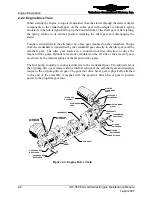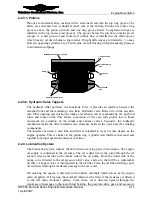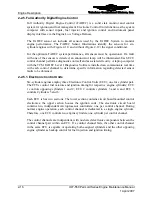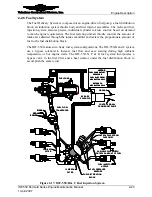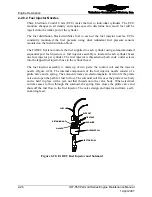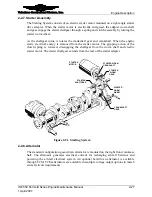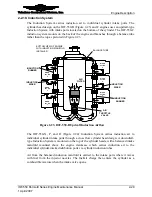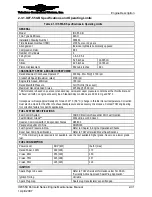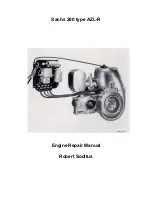
Engine Description
Teledyne Continental Motors, Inc.
TM
2-20
IOF-550 Permold Series Engine Maintenance Manual
1 April 2007
permits a failure of the switch or wire to command a High Power Cruise or richer
mixture. If the airframe manufacturer chooses not to install a BP/BE switch, the FADEC
system will default to the Best Power mode when cruise parameters are met. The Engine
Control Panel incorporates the BP/BE switch function in the Best Economy Enabled
button.
2-2.5.6. Speed Sensor Array
The Speed Sensor Aray (SSA) provides the FADEC System with information about the
engine’s crank position and engine speed. The speed sensor array is a hall effect sensor.
The speed sensor array is mounted on the interior bottom of the oil sump. Two sealed,
circular electrical connectors installed in the oil sump walls, one on each side, conduct
signals from the speed sensor array to the ECU through the engine low voltage harness.
The IOF-550-B and C model engines use a signal conditioner mounted in the accessory
case to filter the signals from the speed sensor to the Electronic Control Units. The IOF-
550-N, P, and R incorporate the filter into the sensor array; no signal conditioner is
required on the IOF-550-N, P and R.
2-2.5.7. Cylinder Head Temperature Sensors
Each cylinder is equipped with a Cylinder Head Temperature (CHT) Sensor to monitor
the temperature of the cylinder within specified operating parameters.
The CHT Sensor is mounted on each engine cylinder via a bayonet style adapter which
threads into the cylinder head. A spring-loaded locking ring on the sensor reinforces this
attachment. The CHT Sensor is hardwired to the Engine Low Voltage Harness. Each
CHT Sensor is independent and operates for a respective engine cylinder.
The sensing element in the CHT Sensor is a thermistor. This type of device changes
resistance with temperature in a linear and repeatable manner. Measuring the resistance
of the sensor alloys enables an accurate determination to be made of the temperature at
the sensor tip.
2-2.5.8. Exhaust Gas Temperature Sensor
Exhaust Gas Temperature (EGT) Sensors report a temperature signal to the
corresponding control channel in the assigned ECU which monitors and controls that
engine cylinder. The ECU will use this signal to control the fuel-to-air ratio. The EGT
Sensors are hardwired to the Engine Low Voltage Harness. Each EGT Sensor is
independent and operates for a respective engine cylinder.
The sensing element in the EGT Sensor is a K-type thermocouple. Two conductors made
of dissimilar metals are fused to form the sensing element. The sensing element
resistance varies proportionally to temperature changes. The ECU monitors the resistance
variations detected at the sensor element tip. The EGT Sensors are installed in holes in
the exhaust system by means of a worm screw clamp.
2-2.5.9. Manifold Air Pressure Sensor
The FADEC System utilizes two manifold air pressure (MAP) Sensors for measuring the
engine’s induction air pressure (manifold air pressure). The sensors are self-contained,
non-serviceable units that are thread-mounted into tapped bosses on the intake plenum on

